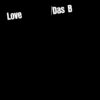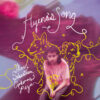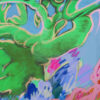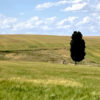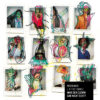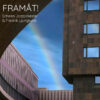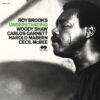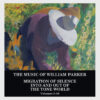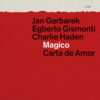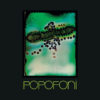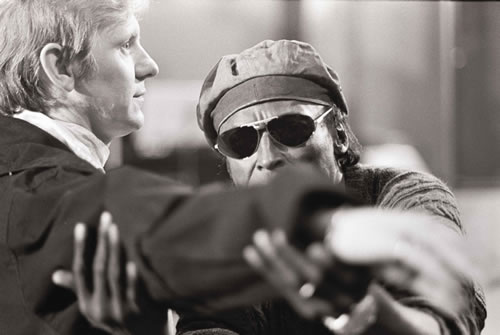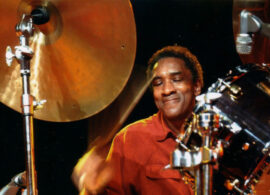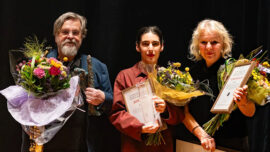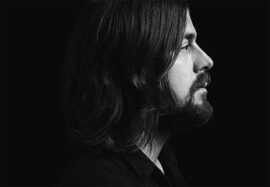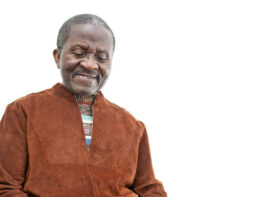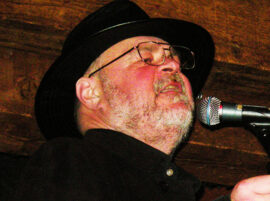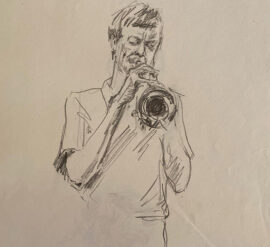Today – January 31, 2015, it is exactly thirty years since Miles Davis and Palle Mikkelborg entered Easy Sound Studio in Copenhagen with the Danish Radio Big Band to record the suite «Aura». Mikkelborg wrote the suite for Miles’ visit to Copenhagen as the recipient of the Léonie Sonning Music Award for 1984. The suite – with its colour-named movements «White», «Yellow», «Red» and so on – took it’s name from the fact that Mikkelborg wrote it around the colours of the rainbow.
Richard Of York Got Buggered In Venice – red, orange, yellow, green blue, indigo and violet – goes the standard English rhyme to remember the colours, or as the Scandinavian variant goes: – What’s for dinner? Roggbif (pronounced ‘rogue beef’).
Though the performance order of «Aura» is «York of Richard…», it all starts out with colour of the rising sun, «…we say good morning to the sun and nature in all its beauty» is how Palle Mikkelborg describes it himself.
«White» was written as a background introduction to the suite to be played from tape before the performance proper.
It has been claimed that Mikkelborg named them for the colours he saw in Davis’ aura. But at the time he wrote it, Palle Mikkeborg had never met Miles Davis,
– When I wrote the piece I hadn’t met Miles, I had only heard the stories and of course had been to all his concerts in Sweden and Copenhagen, Mikkelborg said to George Cole in the latter’s book «The Last Miles: The Music of Miles Davis 1980-1991», – My inner voice said I should do it in seven movements, these prime colours. Miles was fascinated by the idea, although I’m not sure he fully understood what I did – or maybe he wasn’t that interested!
The suite premiered on December 14, 1984, on the occasion of the Léonie Sonning Award ceremony. When Mikkelborg wrote it he created a scale by assigning a chromatic note to each of the letters of Miles Davis name, M-I-L-E-S D-A-V-i-s. These eight different notes put down the foundation of a ten note theme that formed the basic framework of the composition. This was the occasion at which Miles Davis first met the Danish percussionist Marilyn Mazur, later to become part of Miles’ touring band.
Miles Davis got so enthused by the material that Mikkelborg had written that he called him a month later from the US: «We’re recording it. I’ll be there in two weeks. Get the band to be there!».  In spite of the difficulties Palle Mikkelborg managed to get it all together, and during five days the band recorded a version of the «Aura» suite that was very different from the one performed in December. Palle Mikkelborg explains,
In spite of the difficulties Palle Mikkelborg managed to get it all together, and during five days the band recorded a version of the «Aura» suite that was very different from the one performed in December. Palle Mikkelborg explains,
– The record is quite different from the first performance on stage. He used his intuition …’I like that, I don’t want [this]’, he [immediately] captured the atmosphere of the piece. … He played much more [than planned, Mikkelborg originally planned for Miles to contribute only to the «Violet» movement] and [he] cleaned out much more of my material.
During the days of recording, Miles heard that John McLaughlin was in Copenhagen, called him, and got him to the studio. In the new «Intro», McLaughlin plays the ten note theme – «play some downtown New York, John, you know what I mean?». That was Miles’ instruction when McLaughlin arrived at the studio, without any clue of what was going to happen. The second movement on the record, «White», was played on tape during the December performance to acquaint the people in the room to the sound and scale of the composition. But Miles insisted that it should be a part of the record, «do you have that tape?», he asked. And provided a muted introduction that was used as the introduction to the US National Public Radio’s eight hour series «Miles Davis Radio Project».
Miles Davis also suggested to include both recorded versions of the movement «Red», the last one retitled as «Electric Red» on the record.
When Miles heard the finished tapes that Palle Mikkelborg sent him, he said, «You’ve done a motherfucker job. … It’ll be a two-record set on Columbia». But it would take Columbia a long time to catch on to the record, «… the marketing department didn’t understand the album», was Columbia Records’ George Butler’s explanation. But late in 1989 the record was finally published, to critical acclaim. Chicago Tribune wrote on Sept 7, 1989, a fortnight before its publication that
«At last, the mystery will be over. Miles Davis fans soon will be able to hear an album that marks a long-awaited step forward for the 63-year-old trumpeter. The Columbia Records release is called «Aura», a lengthy, 10-part tone poem by Danish trumpeter-composer Palle Mikkelborg for trumpet and orchestra that was recorded in Copenhagen in 1984 but never released.
The December Award ceremony performance was recorded by Danish Radio, while the Danish Broadcasting Corp. was there to film the recording sessions at East Sound Studio in January and February 1985.
Text: Johan Hauknes
Photo from the Aura sessions: taken from George Cole: The Last Miles, University of Michigan Press 2005
Here you also get in total 25 mins of the Danish TV broadcast «Days with Miles Davis» from the five days of January 31-February 4, 1985, when «Aura» was in the making:
Part 1 – 6 min
Part 2 – 8 min 27 sec
Part 3 – 2 min 45 sec
Part 4 – 8 min 4 sec

